Review of 'Teifental's Tavern Complete Japanese Version' to build a deck and liven up the tavern by serving customers with all-you-can-eat beer

February 20, 2020 (Thursday), the full Japanese version of the board game 'Tifental's Bar ', which will be the owner of a bar in the famous
Tavernen Immortal Full Japanese Version | ArclightGames Official
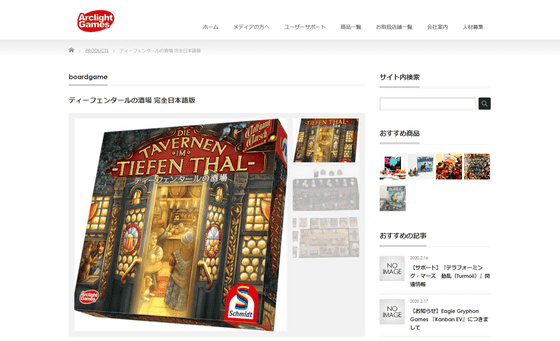
Package with the door to the liquor store

The target age of the Tiffental bar is 12 years old and over, and the number of players is 2 to 4. Play time is assumed to be 60 minutes.
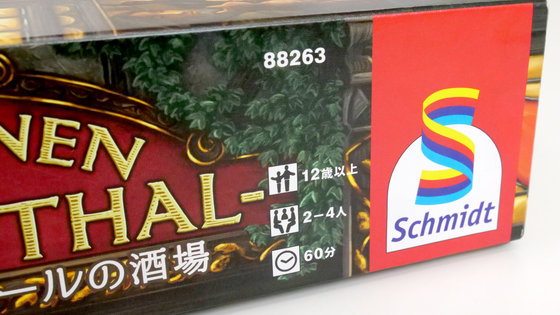
First of all, there was a rule manual and an additional module manual. At Tifental's bar, there are 4 patterns that add a basic game and tokens to use.

Six sheets of cardboard containing boards and tokens.

Since it has a cut, it can be easily removed without using any tools.
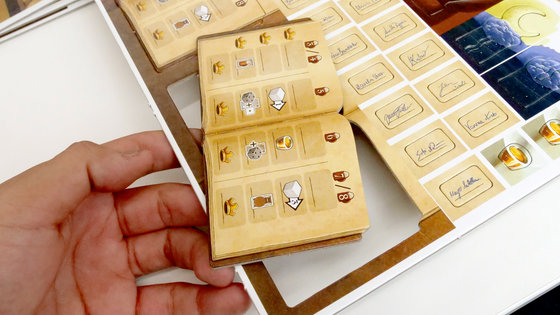
I removed all boards and tokens. There are quite a few types, including small ones. Surrounded by the red frame on the right are the boards and tokens used in the additional modules.
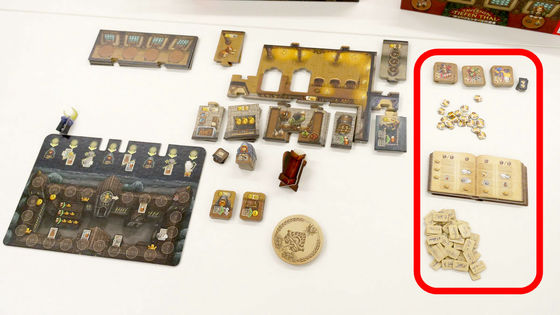
There are 16 white 6-sided dice (dice) and 3 blue, red, yellow, and green 6-sided dice.
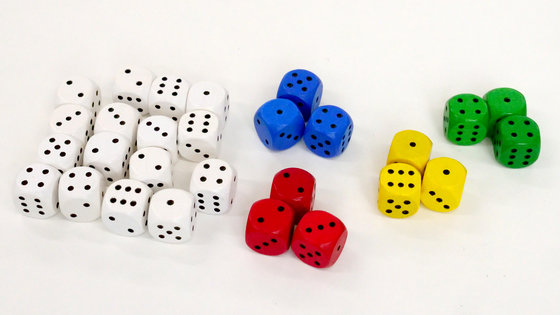
There are 4 white / yellow / brown cube-shaped markers and 1 blue / red / yellow / green monastery marker.
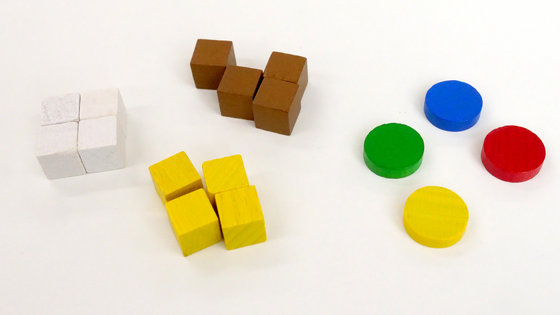
Various cards used in the game.
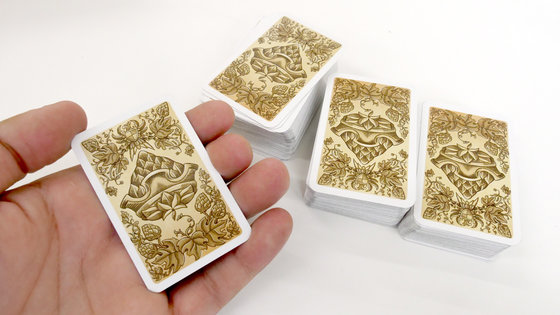
There are various types of cards, and there are many variations such as bar waitresses, tables, dishwashers and aristocrats.

Although it is not directly related to the game play, the inside of the box is also designed to imitate a bar, which is pleasing to the eyes.
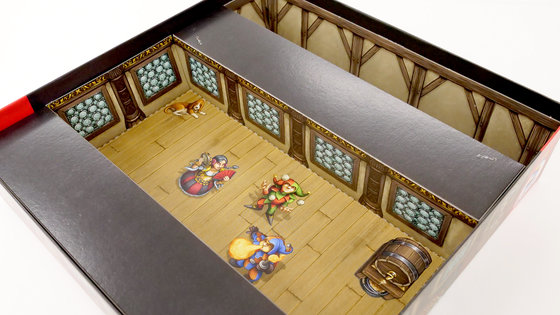
◆ I tried playing a basic game with four people
The Tifental bar is made up of five modules. Module 1 is a basic game with no additional rules, so I first tried playing the basic game with four people.
First, distribute the initial deck to each player. The initial deck is 7 regular customer cards with colored tablecloths ...
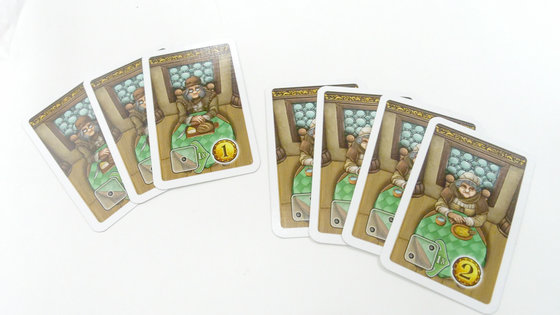
One 'table', one 'waitress' and one 'dishwash'. The initial deck consists of a total of 10 cards.
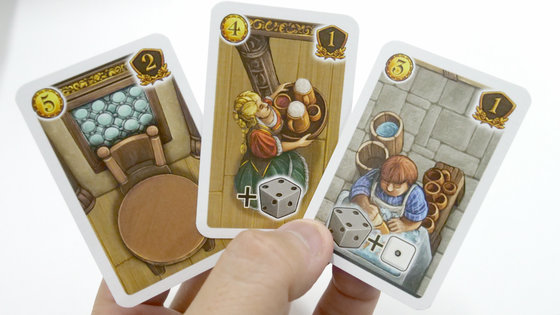
Then place each card, monastery board, counter guest tokens, and colored dice in the center of the desk.

Assemble the player board as follows and place the initial deck in the upper left. In addition, a safe marker (yellow) and a beer marker (brown) are placed at '0' respectively. Now you are ready.
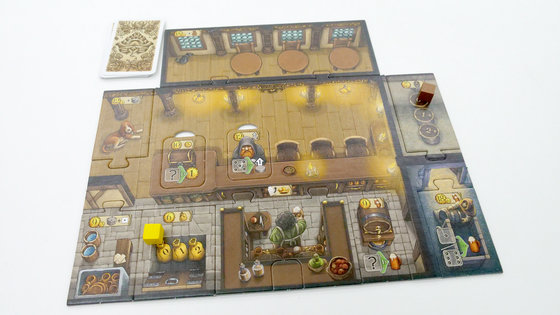
The 'player who went to the bar most recently' gets a marker in the shape of beer and becomes the start player.
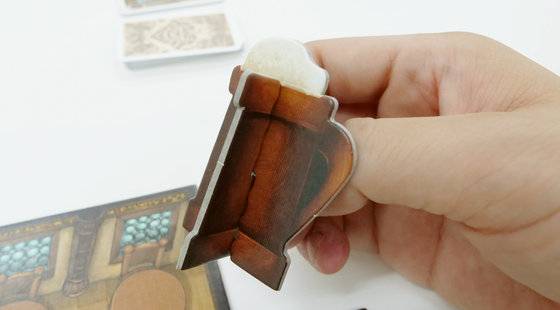
When the game starts, first place a round marker on the monastery board. Round markers advance one by one for each round, and each player receives a bonus.
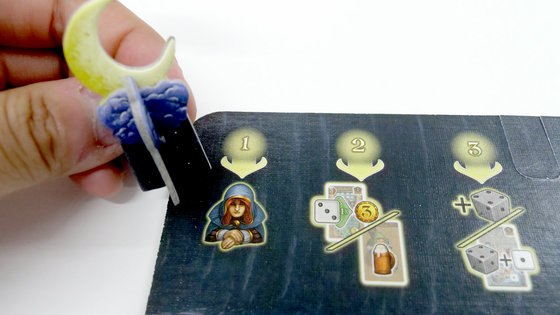
Next, place the cards. Shuffle the deck well ...
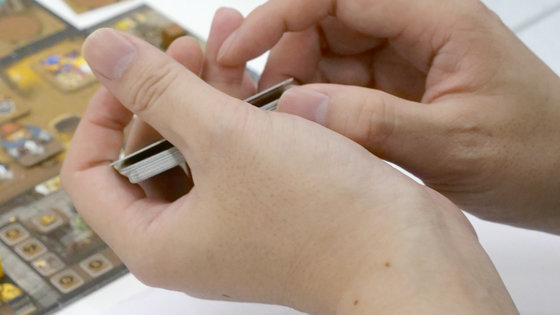
Place the cards until the board table is completely filled. By default, there are three tables, so you can continue to draw from the deck until you draw three customer cards.

If a card other than the customer comes out, put it in place. For example, the waitress card is placed next to where the dog is standing.
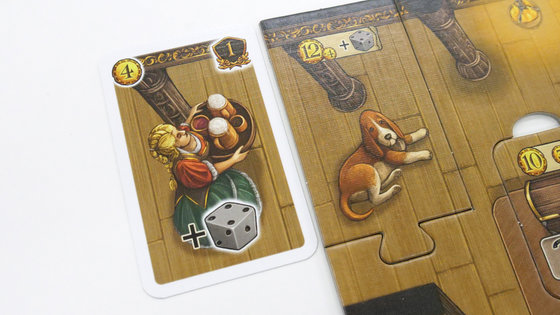
After placing the cards, roll four white 6-sided dice and place them on the coaster as they are.
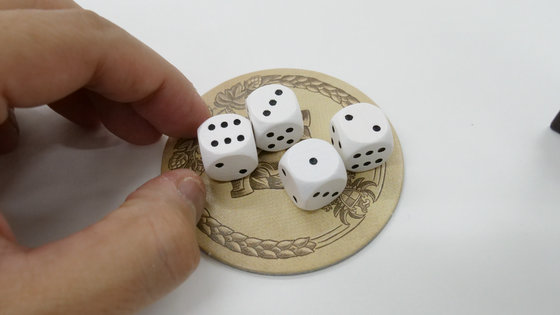
Choose one of the four dice and keep it handy. After taking one die, give the coaster to the player on the left.
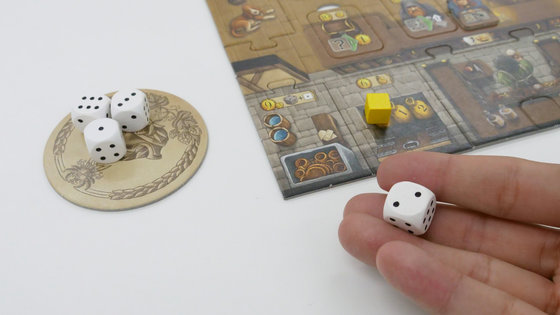
Also, once you have placed the 'Waitress', you can roll an additional die with the same player color as yours and keep it handy.
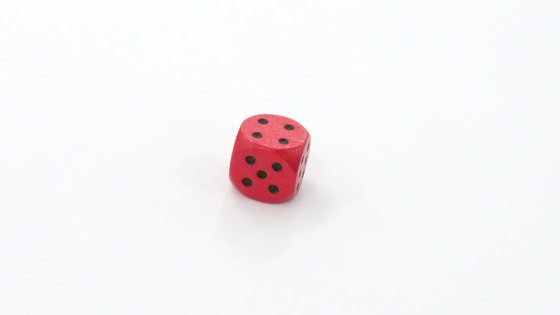
With the four dice at hand, it's time to place the dice on the board. For example, you can get 1 doubloon (money) by putting a die with a 1 on the card of a regular customer's grandfather as shown below.

Also, the change box on the board can be placed with only one die of any eye to earn 1 doubloon.
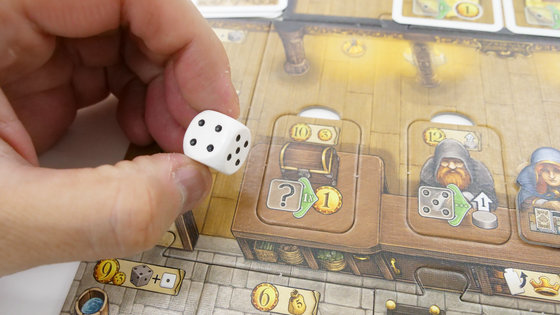
It is also important to produce not only doubloons but also beer that serves customers at the bar. You can produce one beer by placing only one dice of any eye, and you can arrange as many 1- or 6-eye dice as you like in the back of the store to make one beer per dice. It can also be produced. For example, in the following case, place two 1st dice, 2 6th dice, and 1 5th die. Of these, the 5th die is used as the 6th because the effect of the 'Dishwash' card can increase the number of dice by one. In addition, the 'Supplier' card placed on the right side of the back of the store will increase the production of beer to 2 cups per die, so a total of 5 x 2 = 10 cups of beer can be produced.

By consuming beer, you can purchase a general customer card from the field and add it to your deck.
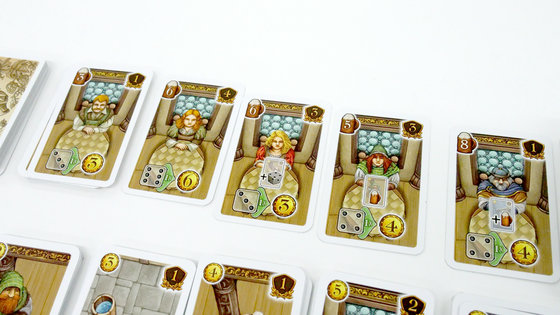
In addition, doubloons can purchase a tavern card that can expand the tavern. The cost at the time of card purchase is written on the upper left of the general customer card and the bar card, respectively. The upper right is the victory points obtained at the end of the game.
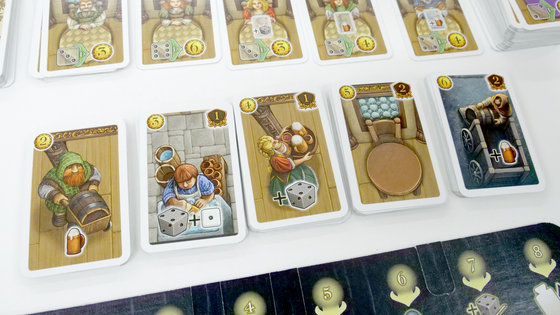
The point is an aristocratic card with 10 victory points. The key to victory is how many aristocratic cards you have, but the method of obtaining them is a little special so that there is no cost notation in the upper left.
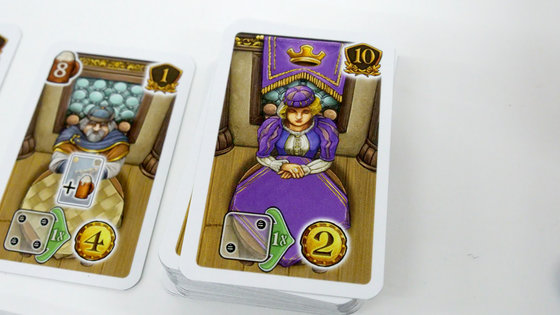
Aristocratic cards can be put into the deck by paying a large amount of beer.
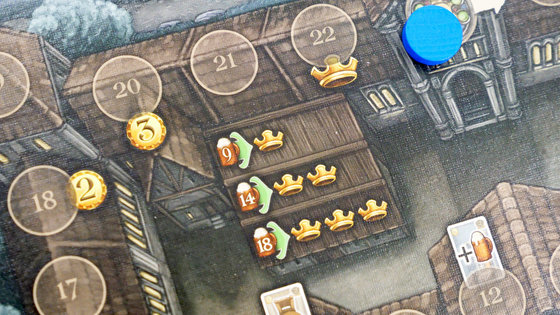
You can also get an aristocratic card by expanding the tavern. Each part of the bar can be upgraded by paying a doubloon or paying the related card as a cost. For example, upgrading a dishwasher requires 9 doubloons, but you can reduce the cost by 3 doubloons per dishwashing card.
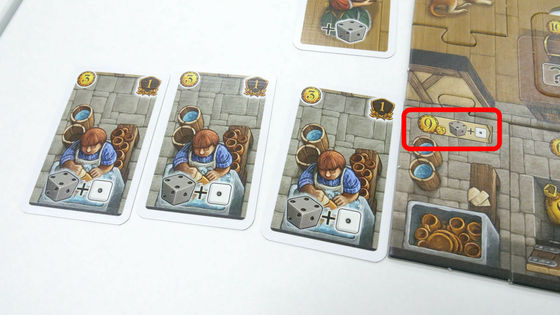
In other words, by paying all 3 dishwashing cards in play ...
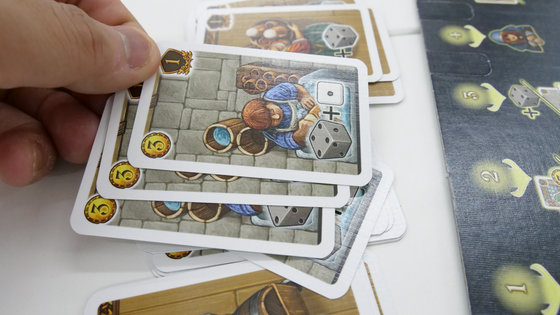
You can upgrade the dishwashing area for free.
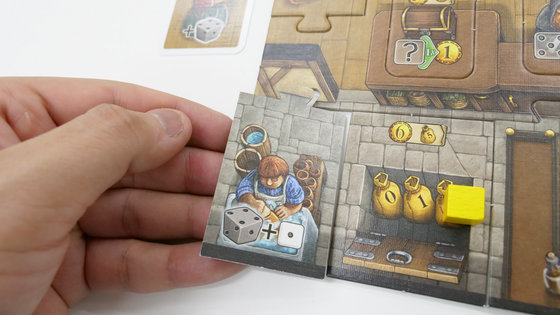
If you upgrade one tavern part, you can put one aristocratic card into the deck.
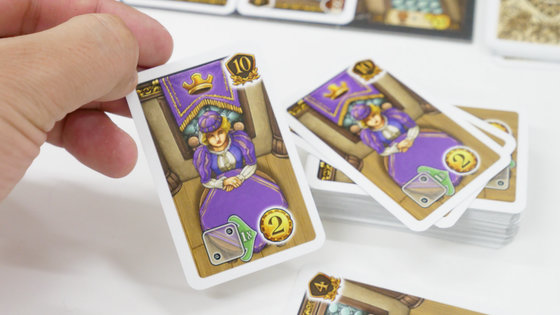
At the bottom of the monastery board, there is a square where you can advance the monastery marker by the effect of the card. You can get various benefits by advancing the monastery marker. For example, in the case of the following squares where the blue monastery marker is passing ...
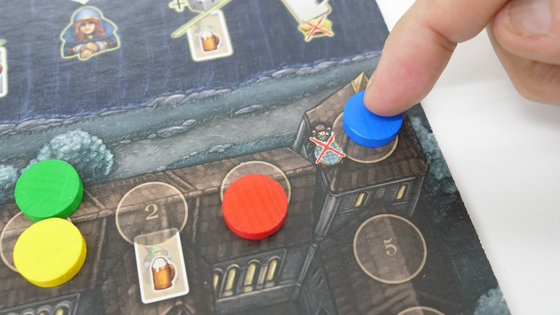
You can ban people who say, 'This customer is a little in our store ...', that is, remove them from your deck. The patron card in the initial deck doesn't produce a lot of doubloons and has no victory points, so it's good for the tavern to ban it as much as possible. The business world is very severe.
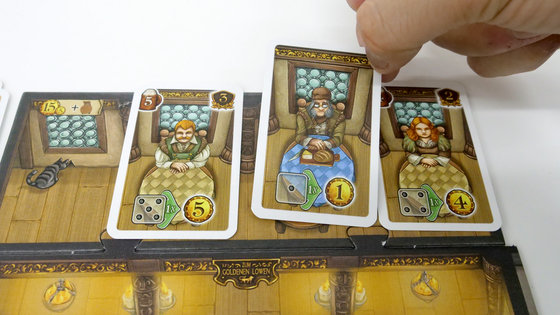
With that kind of feeling, we proceeded with the game while enlivening the bar, and when the 8th round was over, it was a game set. One play is about 90 minutes with 4 players.
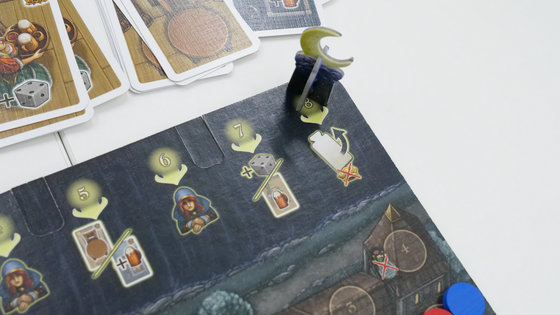
When the game is over, calculate the total victory points on the cards in your deck. The player who ranked first succeeded in actively upgrading the tavern facilities and adding a large number of aristocrats to the deck as intended. It can be said that aristocratic cards with 10 victory points should be acquired more and more to ensure victory.
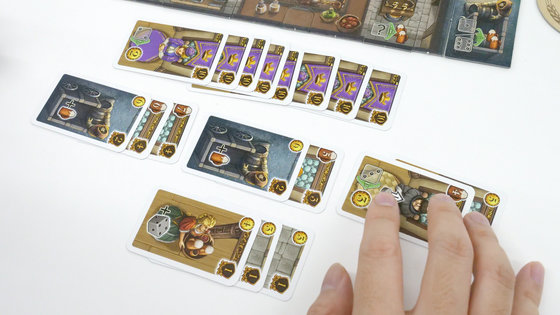
◆ I tried playing with additional modules
Next, I played with Module 2 and Module 3 added.
Module 2 will add 3 types of entertainer tokens and
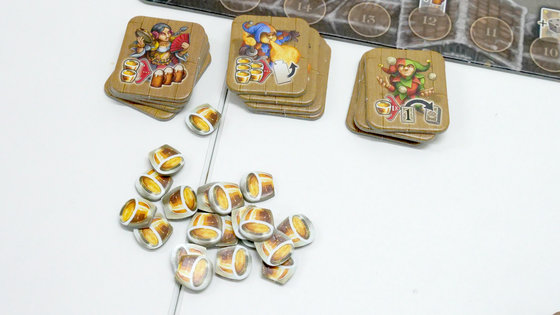
Also, turn the monastery board face down and change to the winter version for Module 2.

Module 3 flips the tavern master board out of the player boards and places a white rating marker on the master. By moving the evaluation marker on this bar owner board, you can get victory points and benefits.
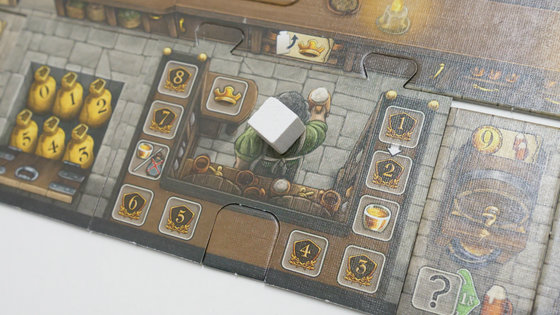
In addition to the general guest card, a 'bard' card will also be added. 'Bard' is a card that allows you to advance the evaluation marker by one square.
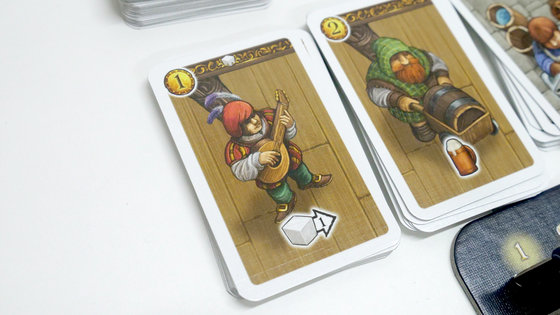
When the evaluation marker passes over the square on which the schnapps are drawn, you will receive one schnapps token.
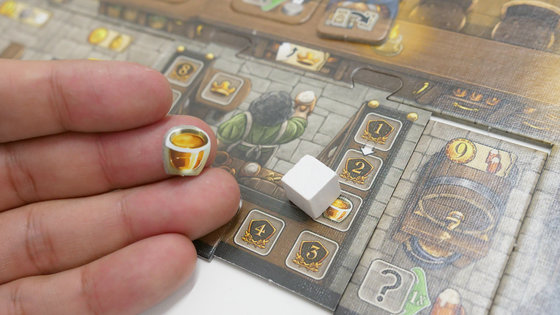
Schnapps tokens are placed on the bar counter.

As the round progresses ...
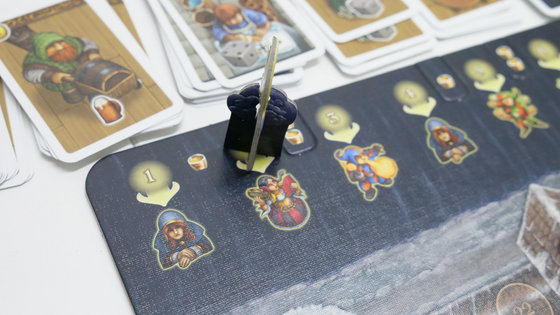
Entertainer tokens are distributed to players. For example, the following entertainer tokens will convert one Schnapps token into two doubloons.
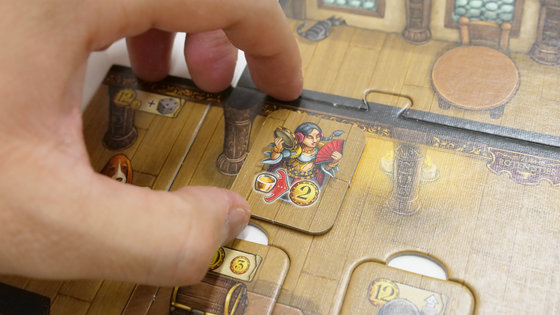
By letting the entertainer drink schnapps, the entertainer dances and sings, so the bar gets excited and brings money to the bar.
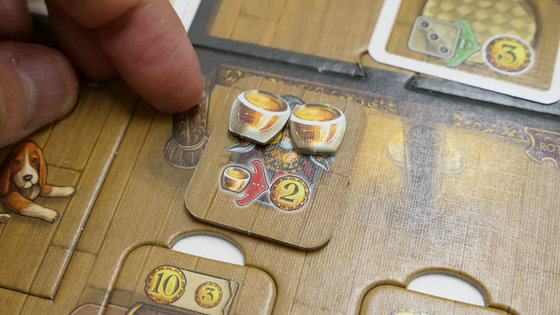
Other entertainers can convert one die roll to any roll by paying one schnapps token.
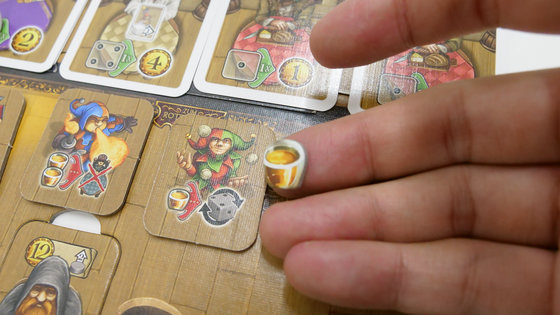
Changing the dice roll will greatly change the amount of doubloons and beer, so if you want to buy schnapps for an entertainer, you will have a great chance. By using schnapps and evaluation markers, you can expect a more sharp game development than the basic game.
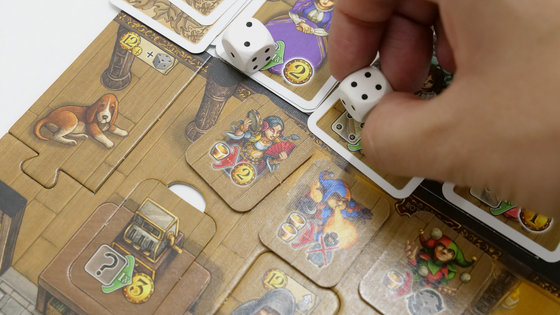
The bar of the player who adopted the strategy of 'always buy a table and a bard in every round' is as follows. In the latter half of the game, it developed into a large bar that produced a large amount of doubloons and beer, and other players were noisy, saying, 'Only that bar is full of excitement.'
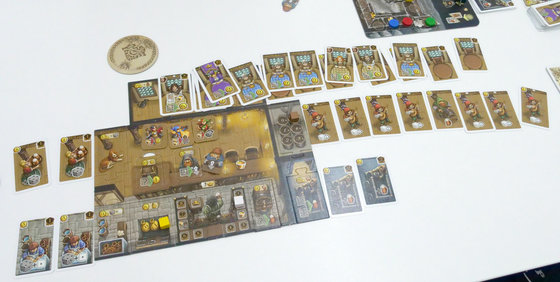
Anyway, every round, a bard appears in the store and sings ...
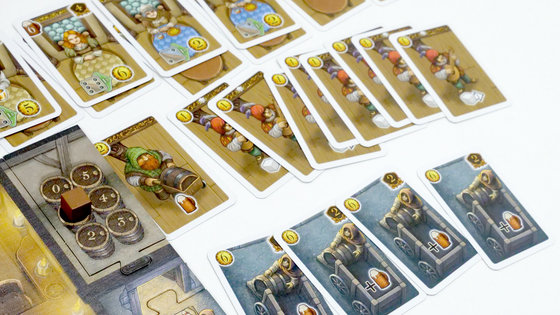
The evaluation marker goes around on the bar owner's board.

Until the middle of the game, there was only one aristocratic card in the deck, and it should have been clearly behind in points, but the momentum exploded at the end of the game, and in the final round alone, we got 7 or more aristocratic cards.
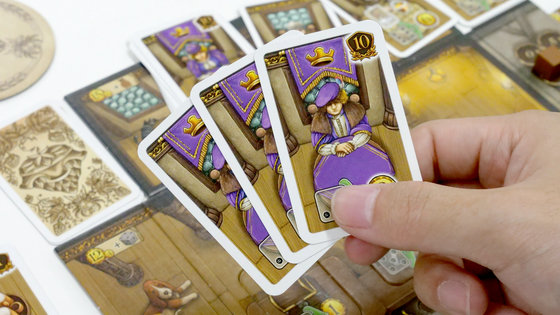
The bar, which was so popular that other players were jealous, won the championship with a point difference of nearly 100 points over the second-placed player.
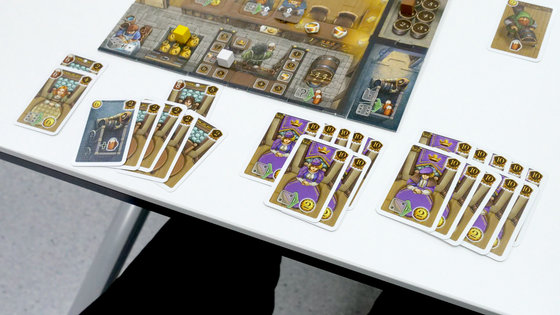
Tifental's Bar is a game where the rules are simple and once you get used to it, you can proceed quickly and quickly. Luck is important in the part of 'rolling the dice and using the eyes', but more than that, 'paying the cost to get the cards and build the deck' is the key to victory. The basic game has the impression that it is just a tutorial for getting used to the basic rules, and the introduction of additional modules will create ups and downs in the development of the game.
The rules themselves are very simple, but as the target age is 12 years old and over, it is necessary to remember and manage resources such as doubloons and beer in your head. Even though it is visualized by dice, it can be confusing while thinking 'Do that and do this ...', so uneasy people play while taking notes. There is also.
Also, since the player board is composed of multiple boards and many additional modules are prepared, there are many types of boards and tokens, and it is quite difficult to manage the components. As a result, it sometimes took some time to prepare the game.
The full Japanese version of Tea Fenthal's bar is available at Amazon.co.jp and can be purchased for 5800 yen including tax.
Amazon | Tavernen Immortal Full Japanese Version | Board Games | Toys
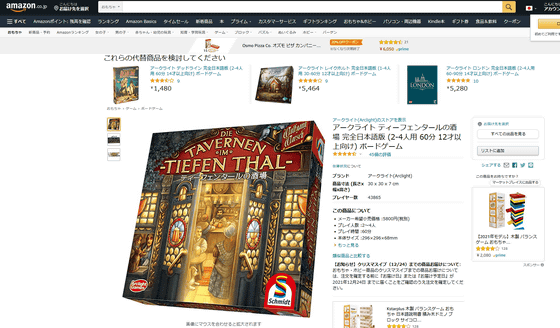
Related Posts:







